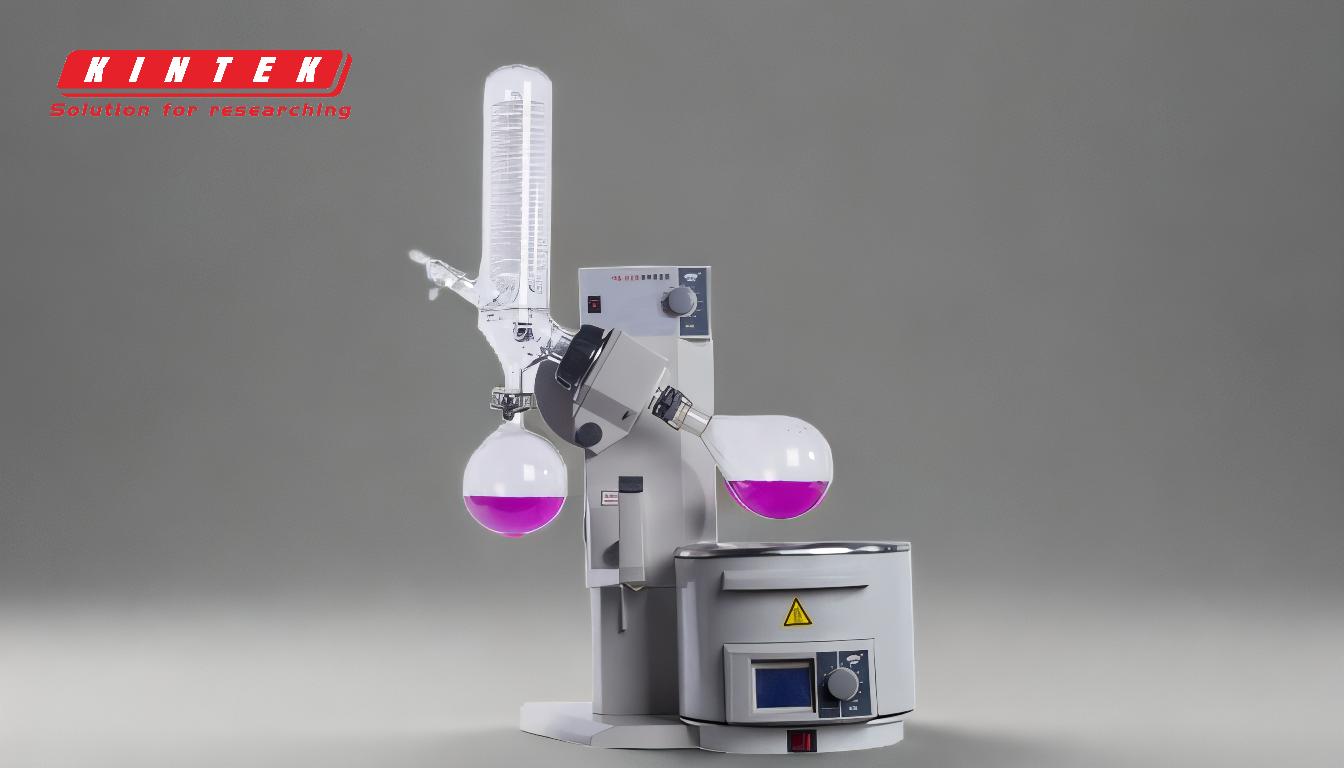Yes, ethanol can be effectively evaporated using a rotary evaporator (rotovap). Ethanol is a volatile solvent with a relatively low boiling point (78.37°C at atmospheric pressure), which makes it suitable for rotary evaporation. The process involves reducing the pressure in the system to lower the boiling point of ethanol, allowing it to evaporate at a lower temperature. This prevents thermal degradation of heat-sensitive compounds in the solution. The rotovap's rotating flask increases the surface area of the ethanol, promoting faster evaporation, while the vacuum pump and condenser system efficiently collect the evaporated ethanol for recovery or disposal.
Key Points Explained:

-
Ethanol's Properties and Suitability for Rotary Evaporation:
- Ethanol is a volatile, flammable, and colorless liquid with a boiling point of 78.37°C at atmospheric pressure.
- Its low boiling point and compatibility with rotary evaporation systems make it an ideal candidate for this process.
- Ethanol is miscible with water and many organic solvents, which allows it to be used in a wide range of applications, including as a solvent in laboratories.
-
How Rotary Evaporation Works:
- Rotary evaporation involves reducing the pressure in the system using a vacuum pump, which lowers the boiling point of ethanol.
- The solution containing ethanol is placed in a rotating round-bottom flask, which increases the surface area of the liquid, promoting faster evaporation.
- Gentle heat is applied using a heating bath or mantle to further accelerate the evaporation process without causing violent boiling.
-
Steps to Evaporate Ethanol Using a Rotovap:
- Preparation: Add the ethanol-containing solution to the round-bottom flask and secure it to the rotovap.
- Vacuum Application: Activate the vacuum pump to reduce the pressure in the system, lowering the boiling point of ethanol.
- Rotation: Begin rotating the flask slowly to create a thin film of the solution, enhancing evaporation.
- Heating: Apply gentle heat to the flask using a heating bath or mantle, ensuring the temperature is controlled to avoid overheating.
- Condensation: The evaporated ethanol travels to a condenser, where it is cooled and collected in a receiving flask.
- Completion: Once the desired amount of ethanol has been evaporated, stop the rotation, turn off the heat, and release the vacuum.
-
Advantages of Using a Rotovap for Ethanol Evaporation:
- Efficiency: The process is faster and more efficient than traditional evaporation methods due to the increased surface area and reduced pressure.
- Recovery: Ethanol can be recovered and reused, making the process cost-effective and environmentally friendly.
- Preservation: The low-temperature evaporation helps preserve heat-sensitive compounds in the solution, avoiding degradation.
-
Safety Considerations:
- Ethanol is highly flammable, so it is crucial to ensure that all equipment is properly grounded and that there are no open flames or sparks in the vicinity.
- Proper ventilation is necessary to prevent the accumulation of ethanol vapors, which can be hazardous.
- The rotovap should be used in a well-ventilated fume hood to ensure safety.
-
Applications of Ethanol Evaporation Using a Rotovap:
- Laboratory Use: Ethanol is commonly used as a solvent in laboratories for extraction, purification, and crystallization processes.
- Industrial Use: In industries, ethanol is used in the production of pharmaceuticals, cosmetics, and alcoholic beverages.
- Research and Development: The ability to recover and reuse ethanol makes it valuable in research settings where cost and sustainability are important considerations.
In summary, ethanol can be effectively evaporated using a rotary evaporator, making it a versatile tool for laboratories and industries. The process is efficient, safe, and allows for the recovery of ethanol, making it both cost-effective and environmentally friendly.
Summary Table:
| Key Aspect | Details |
|---|---|
| Ethanol Properties | Volatile, flammable, low boiling point (78.37°C), miscible with solvents. |
| Rotary Evaporation Process | Reduces pressure, lowers boiling point, and increases surface area. |
| Steps | Preparation, vacuum application, rotation, heating, condensation, completion. |
| Advantages | Faster evaporation, ethanol recovery, preservation of heat-sensitive compounds. |
| Safety | Use in a fume hood, proper ventilation, avoid open flames or sparks. |
| Applications | Labs (extraction, purification), industries (pharmaceuticals, cosmetics). |
Need a rotary evaporator for ethanol evaporation? Contact us today to find the perfect solution for your lab or industry!













